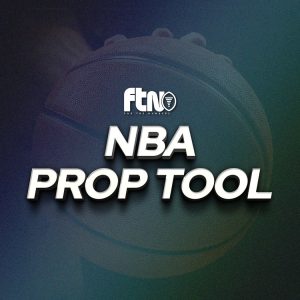
The United States Football League re-launched this past week after a 36-year hiatus. Injury reports were hard to come by and team depth charts were muddled and often flat-out wrong. Multiple teams experimented with a quarterback-by-committee approach.
Through all of this, I was able to take second and seventh place in DraftKings’ large Sunday DFS tournament, netting $10,000 and $700, respectively. In this article, I’ll break down how you can put yourself in a similar position to capitalize on these brand new USFL DFS contests.
The two general keys to success for these USFL contests are aggressive stacking and chasing player usage.
Those familiar with my previous DFS work have heard those words before, but they ring even more true for the USFL.
There are only eight total teams in the USFL, so slates are only four games deep. This is very different from a typical NFL slate, which generally has 8-12 games to choose from.
Here’s a quick thought experiment to illustrate why we should aggressively stack in the USFL. Think about a Week 2 NFL main slate for DFS, where there are 13 games played: What are the odds that one team outscores every other team by two touchdowns? Very low, right? There are 25 other teams on that slate, so I would be surprised if one team’s offense rose to the top.
Now, think about the USFL, with four games on the slate. What are the odds that one team outscores the other seven by two touchdowns? It’s hard to pin down exact odds, but we know, intuitively, that these odds are much higher than the NFL odds. You cannot convince me that a team has a better chance to greatly outscore 25 other teams than seven other teams.
This is the fundamental thought experiment behind stacking aggressively in these USFL contests. We already know that stacking is necessary in DFS, but I saw far too much of the field going with only single stacks in Week 1. I will be exclusively double- (and maybe even triple-) stacking my QBs in Week 2.
The final point before diving in: It’s important to always chase usage in football. My $10,000-winning lineup from Week 1 was centered around 5% rostered Shea Patterson, double-stacked with the starting Michigan RB (Stevie Scott) and one of the starting Michigan WRs (Lance Lenoir).
With six QBs on the Sunday slate, we should “expect” each QB to be in 16.7% (one-sixth) of lineups, yet the public decided Shea Patterson had no chance at DFS relevance. He ran a 4.71 40 time and was the team’s starting QB. Sure enough, the usage was there, as Patterson had 25 pass attempts along with 8 rushing attempts.
In Week 2, there are once again four games on the main DFS slate. I’ll go game-by-game, highlighting stacks to target and a couple players to look out for. Many of the stats found below were compiled by scraping and cleaning play-by-play data for each game off the USFL’s website, and I’ll make sure to include these non-box-score metrics in all future articles, too.
Friday, April 22: Michigan Panthers vs. New Jersey Generals
This will definitely be the least popular game to target on the slate, as it’s the early game, along with featuring two run-heavy offenses. New Jersey threw only 40% of the time, the lowest rate in Week 1, while Michigan threw 43% of the time, third lowest.
Play volume will likely be here though, as Michigan ran 81 plays (run/pass), the most among all teams, and New Jersey ran 75 plays, second most.
On Michigan’s end, I like throwing RB Stevie Scott and WR Lance Lenoir into lineups, even together. The play volume was there overall for Michigan, even if the pass volume ultimately fell short of what we’re searching for.
While Scott and RB Cameron Scarlett split carries, 4 of the 5 red zone carries went to Scott, so I’m not looking at playing Scarlett in Week 2.
Shea Patterson took 4 sacks and fumbled 3 times, so while he got there for DFS last week, I think there’s a chance Paxton Lynch is more involved in Week 2.
I’ll likely have slim (but probably over the field) exposure to Patterson again, as Lenoir and fellow WR Joe Walker hogged the Michigan targets, accounting for 50% of the team’s total. Another plus — while Michigan was extremely run-heavy, they did throw 50% of the time in the red zone, one of the higher rates in Week 1.
If you’re intent on double-stacking Michigan WRs, sprinkle Devin Ross in with those two on occasion and root for a big play.
On the New Jersey end, I’m not interested in the non-mobile and low-volume QB Luis Perez. Only 4 of 15 (27%) red zone plays were pass plays, and it’s difficult to find good things to say about stacking the Generals in DFS.
From this team, the correlated duo to target is RB Trey Williams with WR Randy Satterfield. Both are inexpensive and showed strong usage. Williams had 13 carries (2 red zone), along with 5 targets (1 red zone). Yes, Darius Victor had more carries (16) and more red-zone carries (5) than Williams, but he had no targets. If the Generals end up passing more, I can see Williams and Satterfield paying off together, and it’s a combination nobody will be targeting.
Saturday, April 23 (morning): Pittsburgh Maulers vs. Philadelphia Stars
USFL teams only had three weeks of training camp, very little time for QBs/WRs to get on the same page via practice reps.
Despite this obstacle, the Stars ran 45 (!) pass plays, 10 more than any other team in Week 1. They threw it 5 of 10 times in the red zone, too.
Bryan Scott handled all 45 dropbacks for the Stars, yet the official box score doesn’t do the play-calling justice. Scott is only credited with 36 official pass attempts, but the intent to pass even more was there. Showing his lack of NFL-level awareness, Scott was sacked 6 times and fumbled twice. The 45 dropbacks includes those sacks, fumbles and penalties.
While some see a shaky performance, I see the potential for slate-breaking passing volume, and a team that gave him the full keys to the offense after only three weeks of training camp.
Scott and the Stars are sure to be a popular team to stack, and you’ll want to get different from the field. My recommendation is to throw in one of the two PHI RBs. Both Matt Colburn and Darnell Holland had 9 carries, and both had 2 of them come in the red zone. To really get you excited though, Colburn had 7 targets, while Holland had 4 targets. Both demonstrated the red zone involvement and pass game usage to make for worthy stacking partners to Scott.
Stack Scott with one of his RBs, as well as WR Chris Rowland. Rowland finished with 9 targets (23% share), while no other receiver had more than 4. The Scott-Rowland connection is sure to be popular this weekend, so make sure to add a Philly RB to the mix to have a more unique build.
On the other end, the Maulers lost 17-3 in Week 1, yet still ran RBs Garrett Groshek and Madre London a combined 31 times. Groshek is slightly more expensive and had more carries (16) than London (14). However, London is the preferred run back to Scott stacks, as he had 4 of the team’s 5 red zone carries.
Saturday, April 23 (night): Birmingham Stallions vs. Houston Gamblers
The Stallions have a situation to monitor at QB, as Alex McGough left early with an ankle injury. J’Mar Smith came in as replacement and was far more efficient.
Assuming Smith gets the start, I’d roll with double stacks on the Stallions’ side, with two of Victor Bolden (8 targets, 25% share), Osirus Mitchell (7 targets, 22% share) and Marlon Williams (6 targets, 19% share).
The Stallions had the second-highest pass rate (60%) behind the Stars, and Smith stacks are a strong play in tournaments.
The Houston Gamblers are the perfect team to avoid stacking in DFS, as they totaled 81 passing yards on 18 attempts. The team also ran 45 total plays, 10 fewer than any other team.
The only player I have interest in as a runback to Smith stacks would be WR JoJo Ward, who had 9 targets (50% share). RB Mark Thompson had elite usage by team opportunity share metrics, but still finished with only 13 total carries (2 red zone) and zero targets. It’s hard to see fading Thompson being the reason you can’t take down a DFS tournament this weekend.
Due to the insanely low play volume from the Gamblers in Week 2, this is a situation where you don’t need a run back. You can look to a correlated duo like Williams/Satterfield from New Jersey to keep your lineup sharply correlated overall.
Sunday, April 24: New Orleans Breakers vs. Tampa Bay Bandits
The Bandits and QB Jordan Ta’amu were a popular play in Week 1 and project similarly in Week 2. They were one of three teams to pass more than they ran (54% pass play rate), as well as running the third-most overall plays (65).
There will surely be teams double stacking Ta’amu with TE Cheyenne O’Grady and WR Jordan Lasley. O’Grady had a league-leading 11 targets (32% share), and Lasley chipped in 7 targets (21% share). Lasley also had 2 (40%) of the team’s red-zone targets.
To get different, throw Bandits RB BJ Emmons into your double-stack mix. Emmons had 67% of the team’s RB opportunities last week, while no other RB saw more than 57% in Week 1. Emmons had 19 carries and 3 targets, and 4 touches in the red zone. The 67% opportunity share actually masks his bell cow status, as backup RB Juwan Washington had 4 of his 10 touches on the team’s final drive in garbage time.
You have my permission to triple stack Ta’amu with all three of Emmons, Lasley and O’Grady, though I’ll mainly be rotating through two of those three in my double-stacks.
The Breakers only passed 42% of the time, lower than all teams aside from the Generals. Their total play volume was below average, and only 1 of their 7 red zone plays was a pass.
It’s still early in the season, and due to some QB committees, the Breakers’ Kyle Sloter still had the fourth-most dropbacks (27) in Week 1. WRs Johnnie Dixon and Sal Cannella were the only two players above a 20% target share, and they’re the best stacking partners for Sloter.
Mix in RB TJ Logan in Sloter stacks, too, as he had all 4 RB targets. If searching for the Ta’amu runback, I’d lean RB Jordan Ellis, who had 18 carries and 4 of the team’s 5 red zone carries.
Overall, I’d lean more heavily on Ta’amu stacks from this game, as the Bandits project for a better pass rate, along with higher overall play volume.










































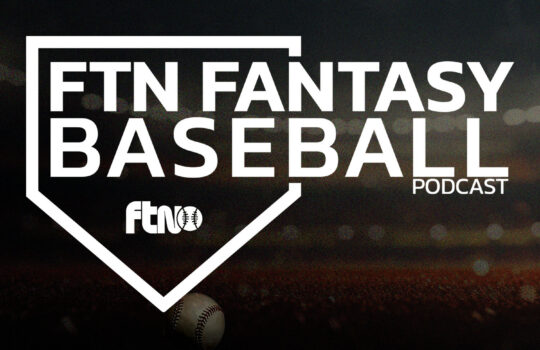

 New York Jets
New York Jets  New England Patriots
New England Patriots  Miami Dolphins
Miami Dolphins  Buffalo Bills
Buffalo Bills  Pittsburgh Steelers
Pittsburgh Steelers  Cleveland Browns
Cleveland Browns  Cincinnati Bengals
Cincinnati Bengals  Baltimore Ravens
Baltimore Ravens  Tennessee Titans
Tennessee Titans  Jacksonville Jaguars
Jacksonville Jaguars  Indianapolis Colts
Indianapolis Colts  Houston Texans
Houston Texans  Las Vegas Raiders
Las Vegas Raiders  Los Angeles Chargers
Los Angeles Chargers  Kansas City Chiefs
Kansas City Chiefs  Denver Broncos
Denver Broncos  Washington Commanders
Washington Commanders  Philadelphia Eagles
Philadelphia Eagles  New York Giants
New York Giants  Dallas Cowboys
Dallas Cowboys  Minnesota Vikings
Minnesota Vikings  Green Bay Packers
Green Bay Packers  Detroit Lions
Detroit Lions  Chicago Bears
Chicago Bears  Tampa Bay Buccaneers
Tampa Bay Buccaneers  New Orleans Saints
New Orleans Saints  Carolina Panthers
Carolina Panthers  Atlanta Falcons
Atlanta Falcons  San Francisco 49ers
San Francisco 49ers  Seattle Seahawks
Seattle Seahawks  Los Angeles Rams
Los Angeles Rams  Arizona Cardinals
Arizona Cardinals 
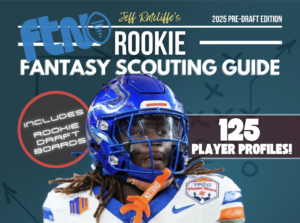

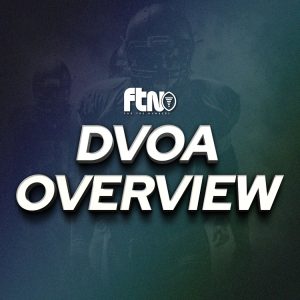
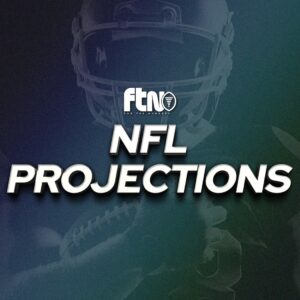




 Boston Celtics
Boston Celtics  Brooklyn Nets
Brooklyn Nets  Philadelphia 76ers
Philadelphia 76ers  New York Knicks
New York Knicks  Toronto Raptors
Toronto Raptors  Chicago Bulls
Chicago Bulls  Detroit Pistons
Detroit Pistons  Milwaukee Bucks
Milwaukee Bucks  Cleveland Cavaliers
Cleveland Cavaliers  Indiana Pacers
Indiana Pacers  Orlando Magic
Orlando Magic  Atlanta Hawks
Atlanta Hawks  Charlotte Hornets
Charlotte Hornets  Miami Heat
Miami Heat  Washington Wizards
Washington Wizards  Denver Nuggets
Denver Nuggets  Minnesota Timberwolves
Minnesota Timberwolves  Oklahoma City Thunder
Oklahoma City Thunder  Portland Trail Blazers
Portland Trail Blazers  Utah Jazz
Utah Jazz  LA Clippers
LA Clippers  Golden State Warriors
Golden State Warriors  Los Angeles Lakers
Los Angeles Lakers  Phoenix Suns
Phoenix Suns  Sacramento Kings
Sacramento Kings  Dallas Mavericks
Dallas Mavericks  Houston Rockets
Houston Rockets  Memphis Grizzlies
Memphis Grizzlies  New Orleans Pelicans
New Orleans Pelicans  San Antonio Spurs
San Antonio Spurs 



